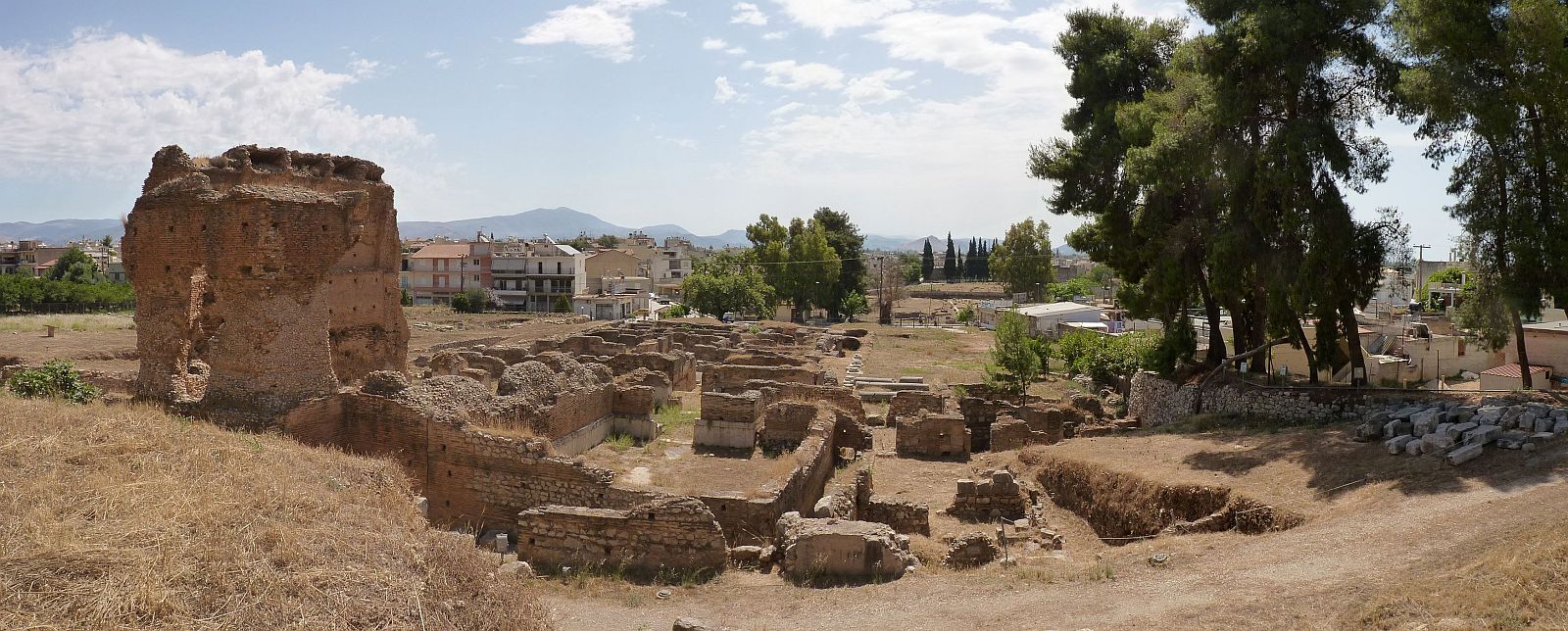Situated on the northeast of the Peloponnese Peninsula in Greece, Argos was inhabited as early as 7000 B.C.. In the Classical Period, Argos was one of the most powerful cities on the Peloponnese. Yet in the 6th century B.C., the city faced extinction until Telesilla, arguably the most famous female poet of her age, came to the defense of Argos and became a heroine.
But when the time shall come that the female conquers in battle,
Drivingaway the male, and wins great glory in Argos,
Many an Argive woman will tear both cheeks in her sorrow.
– Herodotus 6.77
The Argive Army in Ruins:
In 510 B.C., the Spartan king Cleomenes consulted the oracle of Apollo, who assured him that he would conquer Argos. When they learned that the Spartans intended war, the men of Argos gathered their weapons and marched out to face them. The two sides met in a great battle, but eventually the Argive line broke and the remaining soldiers fled. The Spartans killed many as they retreated, but some managed to escape into a sacred grove. Having taken some of the Argive men alive as prisoners, Cleomenes ruthlessly questioned them. He forced from them the names of all of their comrades, and armed with this knowledge, he called to each personally, promising safety. When each man emerged, Cleomenes immediately had him killed.
Finally, one of those in the grove climbed a tree and saw what was happening. When no more men came out to his call, Cleomenes ordered his men to set the grove on fire, and the survivors sheltering there burned alive. Afterward, the king casually inquired to which gods the grove was sacred and learned that it was the grove of Argus. He responded by saying, “Apollo, god of prophecy, you seriously misled me when you foretold that I would capture Argos; I think your prediction has now come true.” He had apparently fulfilled the prophecy merely by his capture of the grove, for prophecies are vague tricky entities. Yet he still resolved to march on the city of Argos, blessing or no.
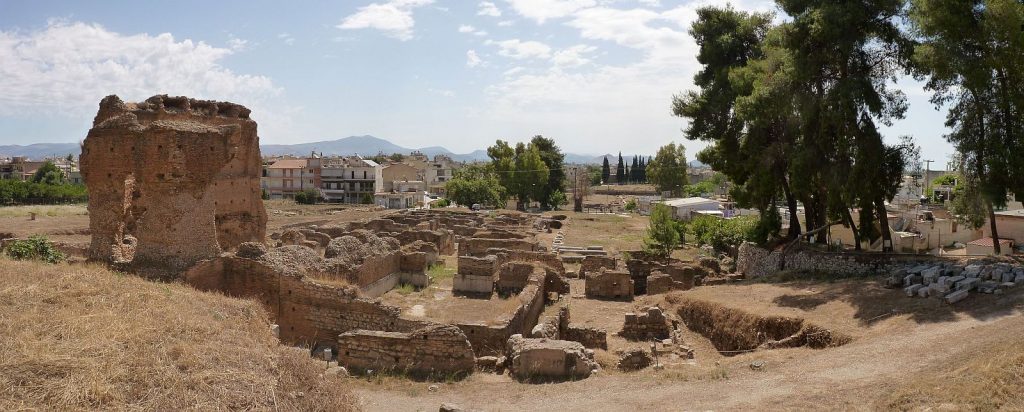
The Thermal Spring of Ancient Argos by Ploync is licensed under CC BY-SA 3.0
Defending Argos:
Having destroyed the entire army of Argos, Cleomenes expected no resistance, but when he reached the walls, he saw to his surprise that they were manned, and an army stood before him. Telesilla had roused the remaining citizens of Argos from their despair and courageously organized the defense of the city. They gathered weapons from temples and private residences, wherever any could be found. She arrayed all the slaves of the city and all the children and elderly along the walls. The young women armed themselves and lined up outside the ramparts in defense of Argos.
Nevertheless, the Spartans gave a great battle cry and attacked, clashing with the women at the walls of the city.
Much to the surprise of Cleomenes and the Spartans, the women did not give ground, but fought valiantly. Eventually Cleomenes realized that he was in a losing situation. He had hoped that the women would withdraw in terror. Since that had not occurred, he faced two poor outcomes. Either his men would lose, to their great shame, or they would win, but only after slaughtering many women, similarly dishonorable. As a result, he called off his soldiers and Argos was saved from destruction. In commemoration, they celebrated the anniversary of the battle each year by swapping roles. The women of the city would dress in men’s tunics and the men would put on women’s dresses. They also commissioned a stone relief of Telesilla and placed it with honor before the Temple of Aphrodite.
What to See Here:
There are several notable remains of ancient Argos in the modern city. These include the temple to Athena Oxyderkes, and the temple of Pythian Apollo, which includes a manteion, an oracular shrine. Of note is the city’s temple. Built into the east side of the hill around the end of the 4th century B.C. The remains of this structure are spectacular, and the theatre counts among the most impressive surviving in Greece.
Adjacent to the theatre, one is able to see the remains of the ancient Agora (market place, or town centre), dating to the 6th century B.C., and the remains of the Bouleuterion are nearby. This council house was built in around 460 B.C., at the advent of democracy in Argos. Reflecting the city’s antiquity, tombs from the Classical and pre-Classical era can be seen.
Most notable is the Hellinikon Pyramid, which dates to the 4th century B.C. Its exact function is unknown, with theories ranging from tumulus tomb to fortress. The most intriguing – though not necessarily likely – is that it was built shortly after the Great Pyramid of Egypt, as a kind of homage, reflecting the excellent relationship the Argives had with the Egyptians. The Argos Museum is exceptionally well stocked with many of the smaller finds from the city.
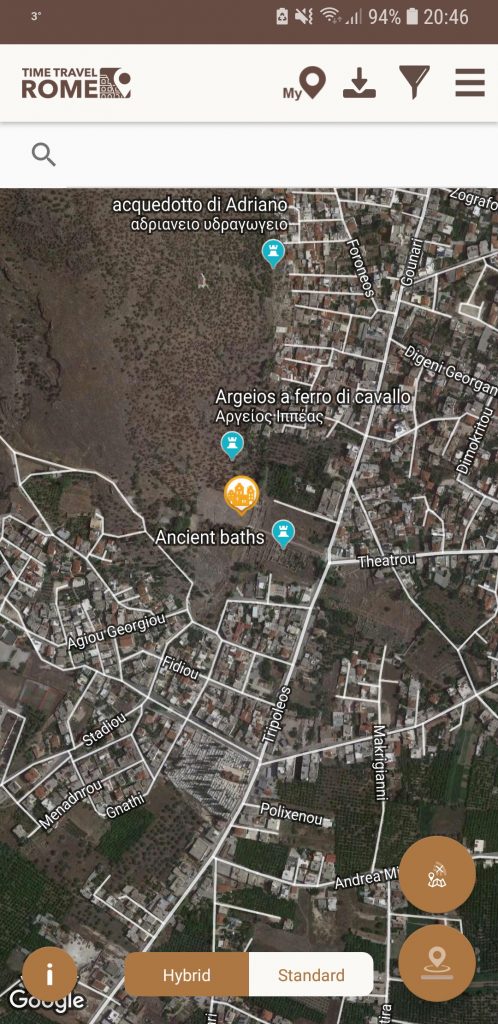
Time Travel Rome 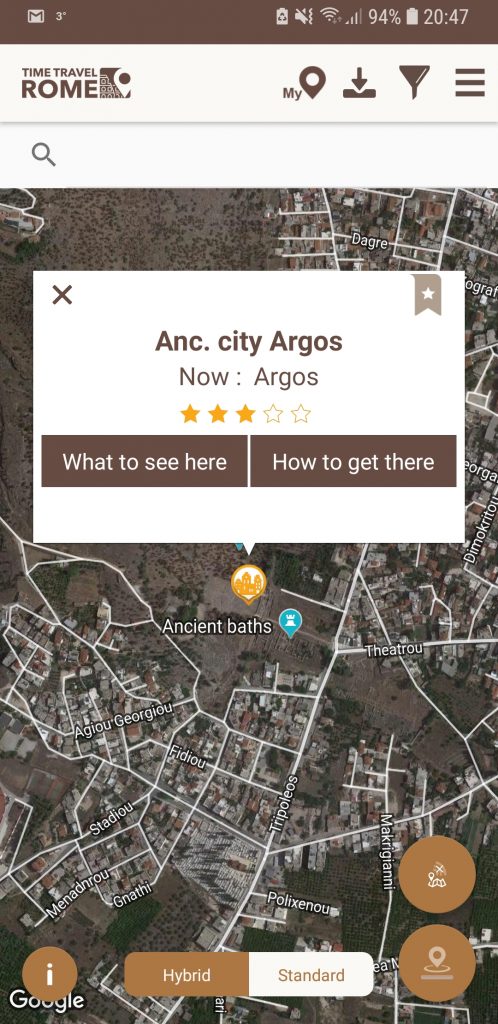
Anc. city Argos 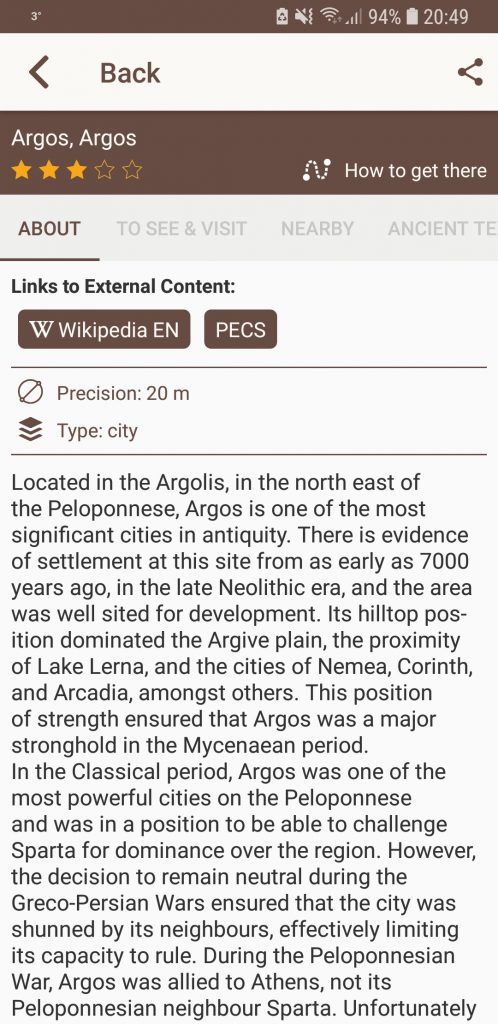
The story about Argos
Pausanias, Description of Greece, 2.20.8-10; Plutarch, Moralia, 245 c-f; Herodotus, Histories, VI.80Argos
This article was written for Time Travel Rome by Marian Vermeulen.
Photo: The Thermal Spring of Ancient Argos by Ploync is licensed under CC BY-SA 3.0
